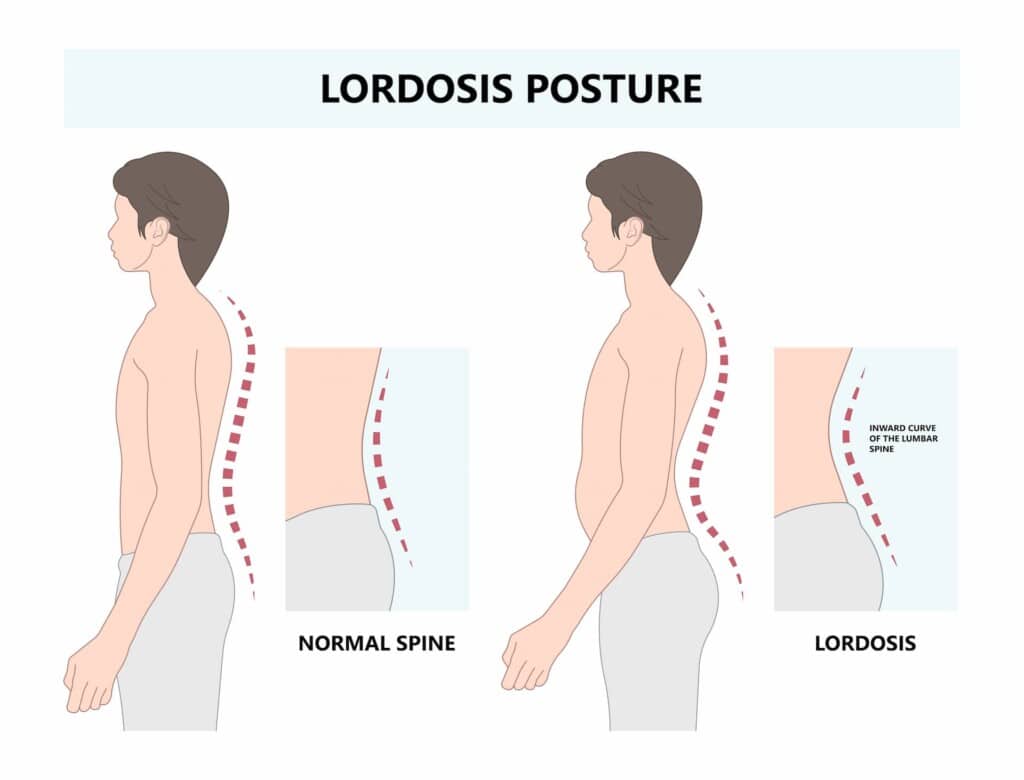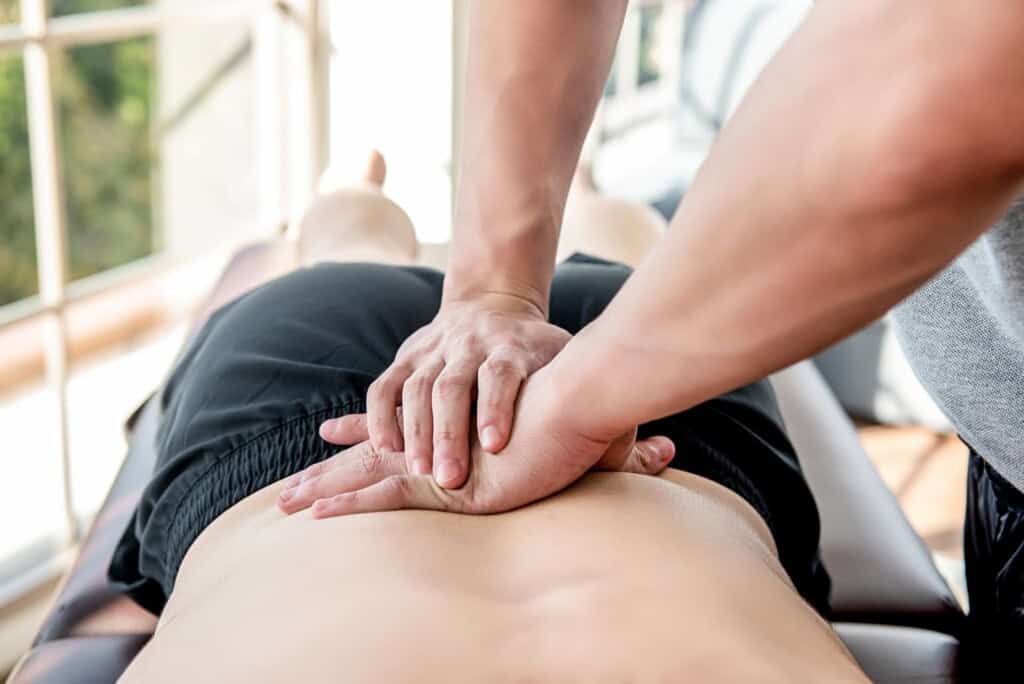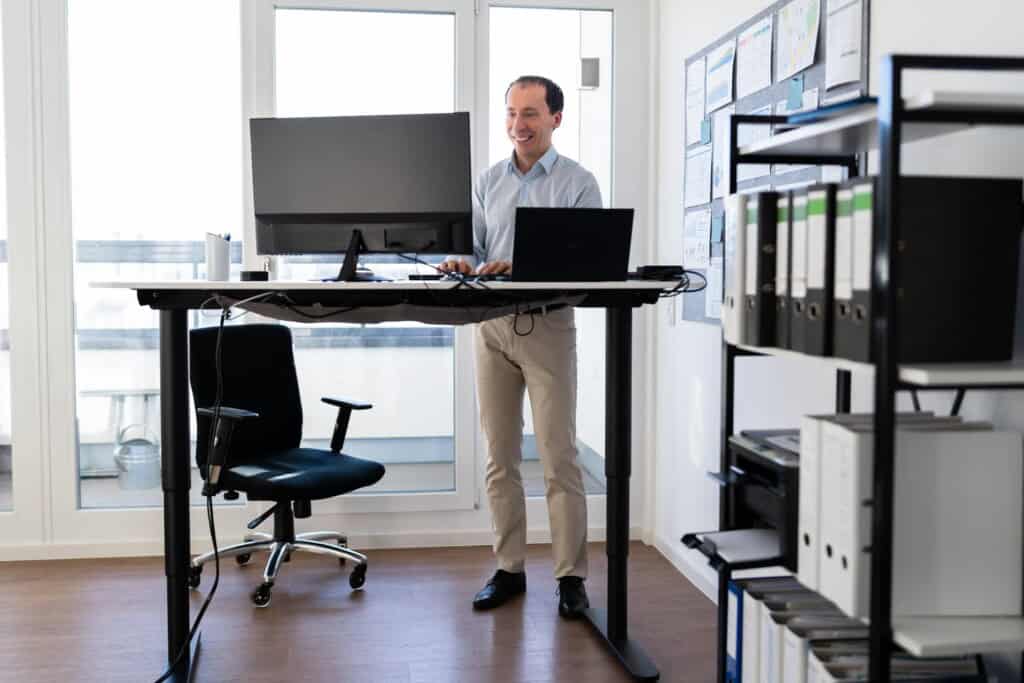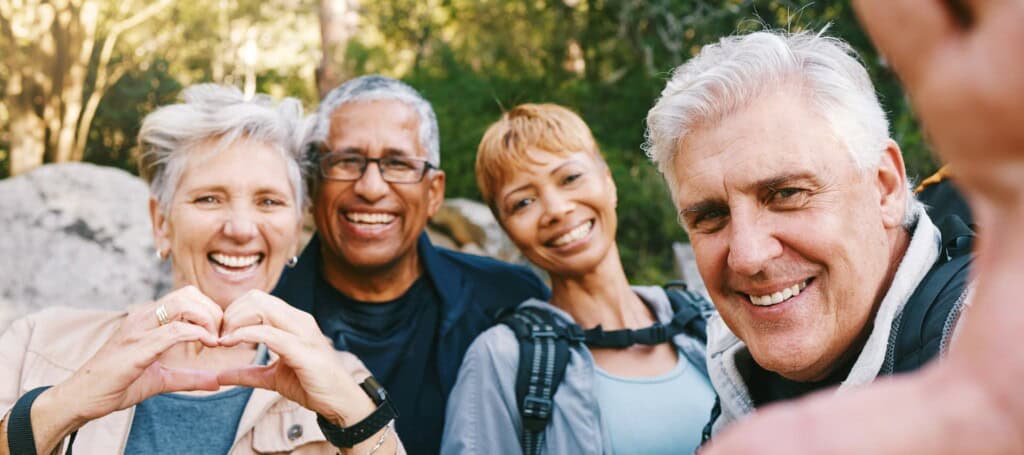You know that feeling when your lower back is screaming at you, making it impossible to find a comfortable position? When you catch a glimpse of your profile in a mirror and notice your belly seems to stick out more than it should, no matter how many crunches you do? If this sounds familiar, you might be dealing with lordosis – an excessive inward curve of your lower back that can make everyday activities feel like an uphill battle.
As a bodywork therapist working with spinal conditions, I’ve seen how lordosis can hold people back from living their best lives. My clients tell me about avoiding activities they once loved, struggling through workdays, and feeling frustrated with constant discomfort. The good news? With the right approach, you can find relief and get back to doing what you love.

Think of your spine like a spring that’s been stretched too far in one spot. When you have lordosis, that natural curve in your lower back becomes more pronounced than it should be – kind of like a “C” shape when you look at it from the side. This extra curve makes your belly stick out and your buttocks appear more prominent, which is why some people call it “swayback.”
But lordosis isn’t just about how you look – it changes how your whole body works:
You might notice:
I’ve seen lordosis develop from various situations:

At Bodywork Masters, we use three main techniques that work together to help your body find relief and better alignment:
Think of your fascia as a sweater that wraps around your muscles, ribs, sacrum, and glutes. When it gets bunched up or twisted in spots, it pulls everything else along with it. Through gentle but firm pressure that we hold just long enough, we help smooth out these tight areas, especially around your lower back and hips.
This technique helps your body let go of old holding patterns by working on adhesions in areas like your ribs, lower back, glutes, and piriformis. These tight areas often contribute to that excessive curve in your back. Many of my clients tell me that after we free up these stuck spots, they feel taller and lighter, and can move more easily in their everyday activities.
You know those spots in your back that feel like knots? Those are trigger points, and they can keep your muscles locked in patterns that make lordosis worse.
We find these tender spots in your lower back, hip flexors, and other areas, and help them release. It’s like untying tiny knots that have been pulling your spine out of place.
After all the adhesions are released, this is where we help your body remember how it should move. With careful guidance, we’ll help stretch:
When we combine these techniques, your body experiences several benefits:
Releasing Tension Patterns
Restoring Balance
Creating Lasting Change

Success in managing lordosis comes from a combination of professional treatment and daily habits. Here’s what works:
Pregnancy often exacerbates lordosis, but gentle bodywork can help manage symptoms by:
Athletes need specific approaches that:
Desk workers benefit from techniques that:
Everyone’s path to improvement is unique, but here’s what you can typically expect:

Lordosis doesn’t have to control your life. Through bodywork therapy, you can develop better body awareness, reduce pain, and improve your overall quality of life. I’ve seen countless clients transform their relationship with their bodies through consistent bodywork therapy. While everyone’s journey is different, the path to feeling better is available to all.
Ready to start feeling better? At Bodywork Masters, we specialize in helping people just like you find relief from lordosis and get back to living life fully. Schedule a session today to begin your journey to better posture and pain-free living starts here.